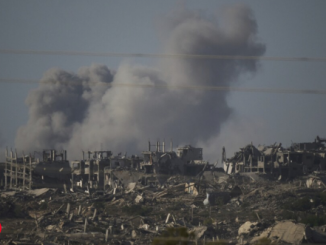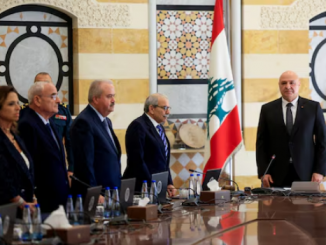
| Published May 8, 2025
Hundreds of Syrian Druze families recount harrowing escapes, fear of further violence and the struggle to survive—some now receiving humanitarian aid from Israel in Mount Hermon region as tensions escalate in As-Suwayda
In recent weeks, the Druze community in Syria, a minority group with deep religious and cultural ties to the region, has found itself under violent assault. What started as a localized incident has quickly escalated into a major humanitarian crisis, displacing hundreds and costing dozens of lives. This feature explores the factors behind this violence, its impact on the Druze community, and the geopolitical complexities surrounding the conflict.
The Trigger: Sectarian Violence and False Allegations
On the evening of April 2025, violence erupted in the suburbs of Damascus, specifically in Jaramana and Sahnaya—areas predominantly inhabited by the Druze. The clashes were ignited by a fabricated audio recording, falsely attributed to a Druze cleric, that insulted the Prophet Muhammad. This falsehood provoked a wave of violence, resulting in deadly confrontations between local Druze fighters and pro-government forces loyal to Syrian President Bashar al-Assad.
The Syrian Observatory for Human Rights reported that at least 120 people were killed in these attacks, with many more injured. The violence didn’t stop at the streets. In addition to the killings, homes were looted, and civilians were abducted. Local accounts described horrifying scenes of brutal home invasions, theft, and destruction, with some victims held hostage by the attackers.
The Exodus: Displacement and Humanitarian Aid
The Druze community, with its deep roots in the region, found itself in a perilous position. As the violence continued, thousands of Druze families were forced to flee their homes. They sought refuge in neighboring villages, including those nestled in the Mount Hermon region, a traditional Druze stronghold.
In response to the growing humanitarian crisis, Israel extended assistance to the displaced families, sending medical supplies and humanitarian aid. The Israeli government confirmed that it conducted airstrikes on Syrian military targets near Damascus to warn pro-regime forces against threatening Druze areas again. This marked an important moment in the region, where Israel sought to signal its commitment to protecting Druze communities, despite the delicate political landscape.
The Broader Picture: Syria’s Sectarian Divide and International Response
This incident is far from isolated. For years, Syria has been embroiled in a brutal civil war, where sectarian tensions between Sunni and Alawite factions have overshadowed the lives of minorities like the Druze, Christians, and Kurds. The Druze—with their unique blend of beliefs rooted in Ismaili Shi’ism and Gnosticism—have historically walked a precarious line between loyalty to the Syrian government and a need to protect their own communities from the turmoil around them.
Reports from Al Jazeera and Reuters indicate that the violence in Damascus reflects a broader trend of escalating sectarianism, particularly in regions like As-Suwayda, where Druze militias have been engaging in a delicate balancing act between autonomy and survival. Local Druze leaders have condemned the recent attacks, calling them a “genocidal campaign” aimed at eradicating their people. Despite this, international attention has been limited, with much of the focus on Syria’s Bashar al-Assad and the country’s geopolitical influence.
Meanwhile, Israel’s involvement, through airstrikes and support, signals a broader regional interest in the fate of Syria’s Druze. While many international actors are hesitant to intervene, Israel’s actions reflect its longstanding interest in protecting religious minorities who share cultural ties with Israel’s Druze population.
Complicated Geopolitics: The Role of External Powers
The involvement of Israel in the conflict adds a layer of complexity to the already volatile situation. Israel’s strikes on Syrian targets are a message to both Syria’s regime and to regional Islamist factions, who have threatened to impose radical ideologies on Syria’s minorities. As tensions flare, Syria’s allies, including Iran and Hezbollah, continue to provide military support to Assad, further complicating any potential resolution.
Furthermore, global powers like the United States and Russia continue to have a vested interest in the outcome of Syria’s civil war. The U.S., despite withdrawing most of its forces, still maintains a critical stance on the protection of minorities in Syria, while Russia backs the Assad regime and works to maintain influence in the region.
Here’s a breakdown of the pros and cons of the feature article on Syria’s Druze community and the recent violence:
Pros:
-
Comprehensive Overview:
-
The article provides a well-rounded view of the recent violence, offering a detailed timeline of events and relevant background, which helps readers understand the complexity of the situation.
-
-
Humanitarian Angle:
-
It highlights the humanitarian crisis the Druze community faces, emphasizing the impact on displaced families and the role of international aid, particularly from Israel.
-
-
Geopolitical Context:
-
The article does an excellent job of placing the violence within the broader geopolitical context, discussing the sectarian divides in Syria, the involvement of foreign powers, and the fragile stability in the region.
-
-
Balanced Reporting:
-
The article strives for neutrality by acknowledging the complex dynamics at play, including the roles of both local Syrian forces and external actors like Israel and Iran.
-
-
Resource List:
-
By providing links to external sources for further reading, the article encourages deeper engagement and offers readers ways to explore the issue beyond the article.
-
Cons:
-
Potential Bias Toward Israel:
-
While the article presents Israel’s humanitarian aid as a positive aspect, the portrayal of Israel’s military strikes might be seen as favoring their actions without fully exploring the controversial aspects of Israel’s involvement in Syria. This could make some readers view the article as partially one-sided in its portrayal of Israel’s actions.
-
-
Limited Personal Accounts:
-
While the article provides a solid overview, it could be further enriched by personal testimonies or first-hand accounts from Druze community members or refugees. These narratives would humanize the story and provide more emotional depth.
-
-
Lack of Solutions or Hope:
-
The article focuses heavily on the negative aspects of the conflict, including displacement and violence, without offering much on potential solutions or signs of hope for reconciliation. It leaves readers with a sense of hopelessness, which may not be conducive to a constructive conversation about the future.
-
-
No In-Depth Exploration of the Druze Faith:
-
While the article mentions the Druze’s unique beliefs, it doesn’t explore their religious and cultural practices in much detail. A deeper dive into the Druze faith could help readers better understand the community’s history, challenges, and identity in the context of the conflict.
-
-
Limited Global Perspective:
-
The article is centered mainly on regional actors like Israel and Syria, without incorporating the broader global community’s reaction to the violence. While it touches on the involvement of global powers, it could delve further into how UN bodies, NGOs, and international law view and address the situation.
-
Conclusion: A Fragile Future for Syria’s Druze
The recent massacre against Syria’s Druze community underscores the continued vulnerability of minority groups in the ongoing civil war. Despite humanitarian aid from various international actors, including Israel, the future of the Druze remains uncertain. Their position as a minority in a divided Syria, caught between external and internal conflicts, paints a bleak picture for the future of the community.
As the violence continues, the world watches, but the true solution lies in peace and reconciliation—something that, in the current climate, remains as distant as ever. For now, the Druze community is left to pick up the pieces of their shattered lives, hoping for a chance to rebuild in a region torn apart by years of bloodshed.
SOURCES: YNET NEWS – ‘They came to kill, loot and humiliate’: Thousands of Druze flee massacre in Damascus
THE TIMES – ‘We fear that violence will come the way of the Christians next’
FINANCIAL TIMES – Israel strikes near Syria’s presidential palace in ‘message’ to Ahmed al-Sharaa




